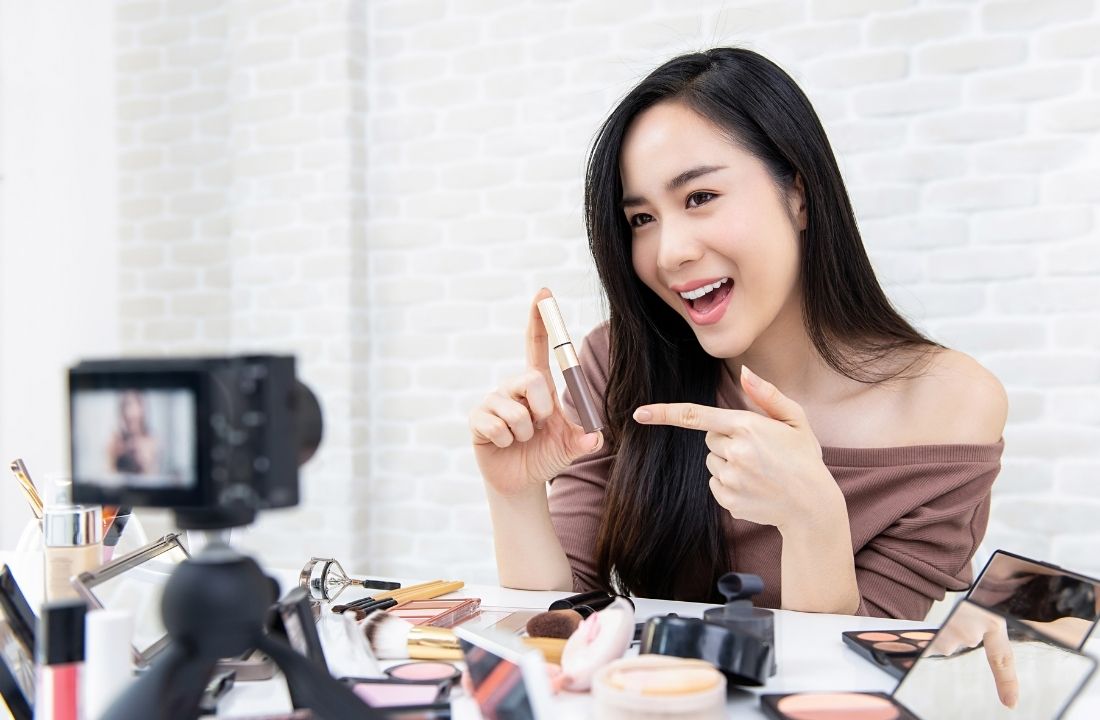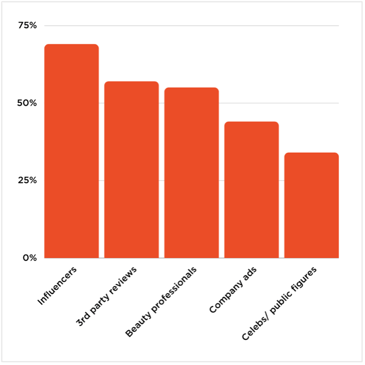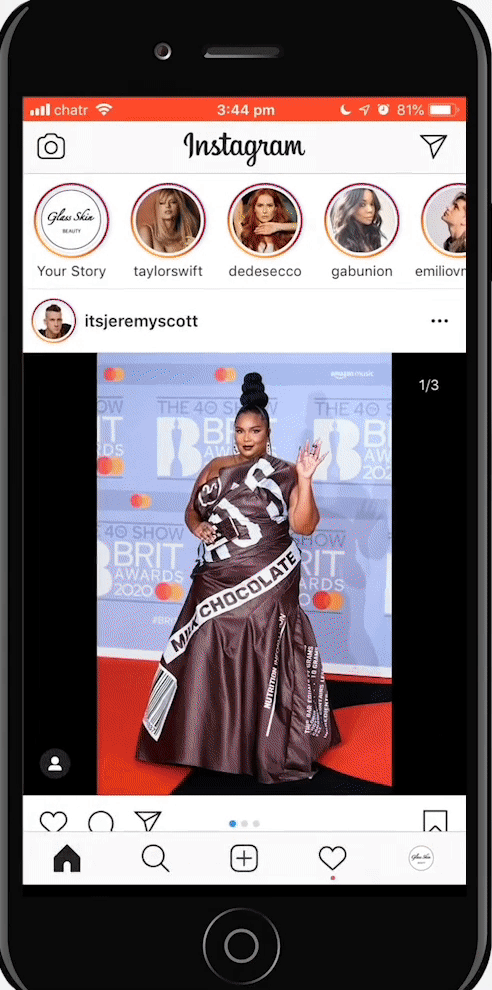
Social media influencers are dominating the beauty market. Each year, more and more beauty companies are dedicating a portion of their budget towards influencer partnerships in hopes of capitalizing on this shift in consumer preference. (Estee Lauder, for example, allocated 75% of its marketing budget towards influencer collaborations in 2019.)
What’s contributing to influencer popularity and how can market researchers invested in the beauty space capitalize on these attributes to build stronger consumer relationships? It comes down to three factors:

67% of people trust social media influencers when looking for advice about whether or not to purchase a beauty product. In contrast, company ads rank much lower at 44%. Not a good look. 😶
While companies are seen as pushy or fake with their advertising efforts (especially when using celebrities to showcase their products), influencers are viewed as having their own set of thoughts and experiences. Surprisingly, audience opinion barely changes even when these same influencers are being paid to promote products.
A vast majority of consumers (85%) said that they would be willing to purchase a product that was promoted by an influencer or were unsure, while only 15% said they definitely would not. Here, it seems honesty is the best policy. By being upfront about any paid transactions, influencers retain a level of transparency with their audiences. If they’ve built a strong enough relationship with fans, they’ll trust that the influencer genuinely endorses the product.
In fact, influencers may rouse suspicions by not disclosing any endorsements, as fans will be left on their own to decide if a social media post is authentic or paid. Today’s influencer isn’t afraid to shout their opinion from the rooftops (whether it’s paid promotion or not).
Everyone is human. People like it when that authenticity shines through. To help build a greater storytelling narrative, it’s common for influencers to openly talk about their personal lives. In addition to the usual topics like love life, work, or friends, they’ll also cover beauty-related 💄 experiences.
Paid promotions aside, influencers aren’t afraid to give their honest opinions about a product.
This is important because it helps viewers find influencers that they can rely on when it comes to giving relevant product recommendations based on their skin needs. For example, an influencer might recommend a certain type of foundation that’s gentle for dry skin because they’re prone to eczema. This would be extremely helpful for fans with sensitive skin looking to try something suitable without wasting money and time 🕦 testing different products. This is another opportunity to build a relationship based on trust .
Another part of any friendship is being honest. That means the good, the bad and the ugly. Paid promotions aside, influencers aren’t afraid to give their honest opinions about a product. If they like it, they make it known. If it’s poor quality … watch out, they’ll be just as quick to share their thoughts. This ties into another reason why fans are more likely to trust paid promotion from their favourite influencer; if it wasn’t a good product, then they wouldn’t be endorsing it in the first place.
Following a social media influencer means being a part of a community ripe with several opportunities for engagement. Whether it be through contests, repost challenges, or even just chatting with others in the comment section, fans use influencers as a way to connect with those who share common interests 💬.
Influencers don’t need a large following to be effective. In fact, mega-influencers (those with between 500,000 and 1.5 million followers) are falling out of favour with brands, who are instead targeting micro-influencers (10,000 to 100,000 followers). These tight-knit groups offer a greater level of engagement within the community, where it’s about having a space to express ideas and keep the conversation going. Through these shared experiences, micro-influencers have the opportunity to build stronger relationships with their fans, which leads to greater loyalty. Companies are actively seeking out micro-influencers for their authentic communities based on trust.

Influencer marketing has created a remarkable space for consumers to share their honest thoughts. The challenge is that most of insights are either never seen by companies or aren't structured in a way that they can be easily documented or interpreted. Let’s face it: an intern stalking the comment section of a social media post will never be a reliable method for capturing audience opinion (let alone data you can trust 👀).
Furthermore, if there’s little room to continue the dialogue, it’s impossible to get the full story. Friendships don't stop after one conversation, there’s simply much more to it. The same concept applies to market research.
The beauty industry is in the midst of an unprecedented evolution; consumer habits, trends and behaviors that were driving business decisions last month are already outdated. The companies who stay tapped 🔨 into their audiences will be the ones who can anticipate future consumer needs and trends.
One proven solution for ongoing consumer engagement is through deploying chats. Chats are conversational surveys that meet consumers where they’re already most comfortable (in this case, social media). They’re designed to be exactly what they sound like: a conversation. This solution aims to mimic the type of discussion you’d have with a friend or family member (like when you share your opinions about that new moisturizer you got from the drugstore.)
Instead of forcing loyal fans to sit through a 15-minute survey, chats are short, to the point, and acknowledge the consumer’s choices as they go along. (A simple “hey I love that product too😍” goes a long way.) Although they might seem simple on the surface, these chats possess the sophisticated tools necessary to run quant and qual studies.
What’s even more important is that companies have the opportunity to re-engage consumers through these chats as their behaviors and attitudes evolve. (On average, over 40% of people agree to participate in future chats.) The beauty industry is in the midst of an unprecedented evolution; consumer habits, trends and behaviors that were driving business decisions last month are already outdated. The companies who stay tapped into their audiences will be the ones who can anticipate future consumer needs and trends.
So, what are you waiting for? Be a part of the conversation and give a chat a try for yourself. You just might like it. 😉
Subscribe to our blog to receive the latest news, trends and best practices from market research experts.

No Comments Yet
Let us know what you think